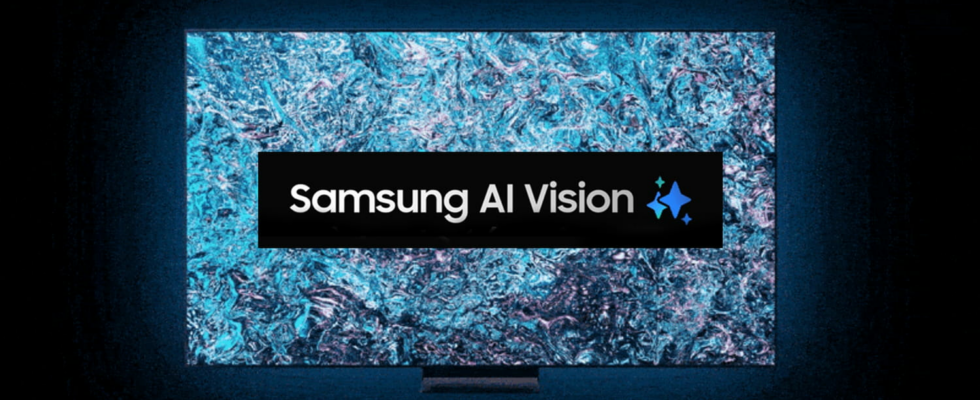After computers, smartphones and other connected objects, artificial intelligence is making its way into televisions. This is Samsung’s ambition with Vision AI, a technology that comes with its share of advantages and risks.
After having generously filled its smartphones, tablets, watches and connected rings with artificial intelligence tools during the year 2024, Samsung is now working to integrate it into its televisions. Its new technology called Vision AI thus joins part of the new 2025 range of Neo QLed, QLed, Oled and The Frame models announced by the manufacturer during CES 2025, the major high-tech show currently being held in Las Vegas.
The AI in a TV has two objectives. First of all, it makes it easier to configure the device. Smart TVs (or connected TVs) do not all stand out for their ease of use. In general, we are content to establish sound and image settings once and for all as navigation in the menus and submenus depending on the content presented (cinema, sport, talk show, etc.) can be a pain. Samsung Vision AI therefore makes it possible to automatically adapt these settings on the fly in order to optimize them. The feature also takes into account the device’s environment (ambient light and noise level) to fine-tune the settings. Not bad. But Vision AI’s main strengths lie elsewhere.
Samsung Vision AI: an assistant to simplify everything
You may be familiar with the X-Ray feature found on the Amazon Prime Video streaming service. By pausing the program currently playing, it allows you to obtain a small sheet indicating who the actors present in the image are at that moment and to reflect on their filmography. Samsung Vision AI takes the concept a notch above. So after Google’s Circle to search function which is being deployed at great speed on smartphones, we will have to take into account Click to search on Samsung TVs. By pressing the appropriate button on the remote control, it is possible to freeze the scene. We can then find out about the names of the actors but also about the clothes they wear, the place where the sequence takes place or even the composition of the dish served at the table during the scene.
It’s not yet clear how this AI works. Samsung told us that it exploited data streams (streaming) to find information and that it was therefore impossible to use it when playing a Blu-Ray film, for example. Compatible sources are limited to TNT, Samsung TV Plus (the streaming and home services service) and TV boxes connected via HDMI.

Another use of Vision AI is the ability to translate, on the fly, the subtitles displayed on the screen. Useful for example when watching a video in original version that does not include French subtitles. But here again, we must not dream: the AI is still incapable of translating dialogues if there are no subtitles.
Samsung Vision AI: Microsoft Copilot in addition
Why start from scratch to implement artificial intelligence functions when many models already exist and work? It is therefore no surprise that we find Microsoft’s Copilot on board Samsung TVs. The South Korean indicates working in collaboration with the publisher to open “the path to more intelligent and personalized experiences”. The firm also specifies that “This partnership will allow users to explore a wide range of Copilot services, including personalized content recommendations.”
In other words, if you thought your TV was your little secret garden for preserving your privacy, that’s it. The AI will learn from your habits and the requests you make on the TV to understand you even better… for advertising purposes, among others. Especially since Samsung does not intend to stop there and is already planning collaborations with other AI giants like Google. Clearly, the arrival of AI in televisions will increase the tracking and profiling of consumers, for better or for worse.

Note that Samsung is not the only one to rely on AI for its 2025 TV range. Its direct competitor, the other Korean LG, is also inviting Copilot on its new Oled EVO televisions. Coated in the in-house artificial intelligence AI Welcome, Copilot also finds its place directly on the remote control of the devices renamed AI Remote for the occasion. One press of the button and you can dictate your requests as you may already do on your mobile.
Samsung’s new TVs should hit shelves in early spring. The new version of Tizen, the in-house operating system, should join compatible TV models released in 2024 later this year. However, not all the new functions will be included. Most of them require the presence of the new NQ8 AI Gen 3 processor on board premium models in the 2025 range to run. It remains to be seen whether other manufacturers will follow this trend and, above all, whether consumers will appreciate these new functions.
